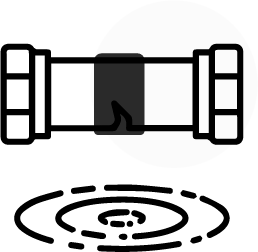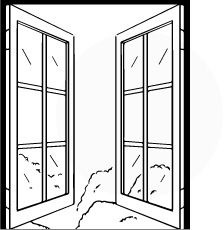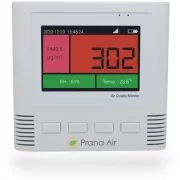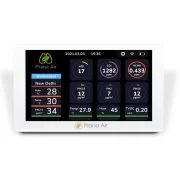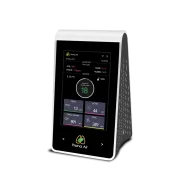
Humidity is the term for the gaseous water content in the air. According to “Your Dictionary,” humidity refers to the quantity of gaseous water in the atmosphere. For example, when it is about to rain,
there is a lot of water vapour in the air.

What is the difference between
Relative Humidity & Absolute Humidity?
Relative Humidity
Relative humidity is defined as the ratio of the amount of water vapour in the atmosphere to the maximum amount of vapour that the air can contain.
Absolute Humidity
Absolute humidity, on the other hand, refers to the amount of water vapour present in a specific volume of air at a specific temperature and time.
![]()
Are humidity and moisture the same?
The amount of gaseous water vapour in the air is referred to as humidity. In contrast, moisture is the amount of water that is liquid. When air exceeds its limit to absorb water in the form of water vapour, water will begin to condense as drops in the air that is why clouds develop. We call that dampness. Rainfall occurs when the humidity is at its highest; this is moisture.
Factors that Affect Indoor and Outdoor
Humidity Levels
Outdoors Environment
 Air Movement
Air Movement
Lower wind speeds cause greater evaporation and higher humidity, whereas higher wind speeds cause less evaporation and lower humidity.
 Temperature
Temperature
A warmer environment may have a higher amount of humidity because hotter air may hold more water vapour.
 Wind Speed
Wind Speed
Higher wind speeds cause less evaporation and lower humidity, whereas lower wind speeds cause more evaporation and higher humidity.

Precipitation
The air is constantly absorbing water, therefore the humidity will increase as it rains for a longer period of time.
 Air Pressure
Air Pressure
The atmospheric pressures at various sites, the local temperature, and the air pressure all affect humidity.
Indoor Environment
 Cooking or boiling water
Cooking or boiling water
Activities like cooking and boiling water discharge water vapour into the atmosphere. The relative humidity of that space will increase as a result.
 Appliances such as Gas Heaters
Appliances such as Gas Heaters
A non-fueled gas heater produces one litre of moisture every hour.
 Ventilation Rate
Ventilation Rate
A high humidity level suggests poor ventilation. Extreme indoor humidity is associated with a rise in the growth of bacteria and mould.
 Drying the clothes indoors
Drying the clothes indoors
By raising the relative humidity in a space, indoor drying increases the likelihood of mould and bacterial growth.
 Water leakages
Water leakages
Moisture and humidity levels might rise as a result of water leaks. The air will become stale as a result, increasing the likelihood that someone will get sick from microorganisms.
What Happens When Humidity Level
Is Very Low & High?
The humidity should be kept between 30% and 60%, which is the ideal or healthy range. When humidity levels are higher
or lower than the recommended range, it can lead to a number of unpleasant symptoms
as well as the development of mould and germs.
When humidity is high (> or = to 60%)
 Encourages Mold & Mildew
Encourages Mold & Mildew
More than 60% relative humidity can encourage the development of mould and mildew. For instance, black mould is thought to be extremely hazardous to people. Certain poisonous mould varieties can have a major negative impact on one’s health.
 Virus and bacteria
Virus and bacteria
Spending too much time in very humid surroundings can make you ill and set off allergies. At humidity levels over 60%, viruses and bacteria flourish and can lead to a variety of respiratory sickness symptoms.

Excess Sweating
When the air is humid, water vapour is present. People sweat more than usual in humid conditions because the high levels of water vapour in the air make sweat evaporation more difficult or take longer than usual.
 Increased Respiration
Increased Respiration
When our bodies naturally heat up in high temperatures, we perspire. The sweat then dries up, cooling our bodies. Our bodies must exert more effort to cool off because of the excessive moisture in the air. This promotes blood circulation and breathing.
 Damage Your Belongings
Damage Your Belongings
Your furniture, carpeting, wallpaper, paints, and other items might be damaged by high humidity. A high relative humidity causes condensation to build up on your walls. As a result, the wallpaper will curl and the paint will begin to flake.
When humidity is low (< 30%)
 Germs and Viruses
Germs and Viruses
Due to low humidity, germs & viruses disperse, and travel around freely. As a result, they thrive in low humidity, and diseases such as RTIs are more common when relative humidity is low.
 Susceptibility to respiratory diseases
Susceptibility to respiratory diseases
Low humidity and low temperatures result in more susceptibility to catching respiratory diseases, colds, and many other respiratory tract infections like sinusitis, otitis, bronchitis, and pneumonia. This is because low humidity will result in drying out the airways.
 Dry Hair and Dry Skin
Dry Hair and Dry Skin
When the air has low humidity, skin, and hair do not retain or get enough moisture. As a result, the skin will flake resulting in skin irritation and itching and can worsen skin conditions like eczema and psoriasis. Whereas hair will become more dry, frizzy, dull, and will break more often.
 Influenza
Influenza
Low relative humidity results in chances of spreading influenza. Low humidity further reduces the ability of cilia (hair-like structures in the airway cells) in removing viruses such as Covid 19 and preventing damage done to the lungs due to such viruses.
 Decreased performance
Decreased performance
Even minor variations in relative humidity and temperature can create measurable changes in your abilities to concentrate or accomplish tasks, especially in places like schools and offices where concentration is extremely important.
How To Maintain the Good Humidity Indoor?
The range for healthy or optimum indoor relative humidity levels is 30 to 60%.
Fix any leakages or pipe leaks
Fix any leaks, faulty faucets, and pipes that may be causing extra condensation and moisture inside.
Dry your clothes outside
If possible, dry your laundry outside because doing so can reduce the relative humidity of a space.
Relocate your indoor plants
Consider moving plants if the relative humidity in a space is greater and they could be a source of dampness.
Use Dehumidifiers
If your room has significant humidity issues, dehumidifiers can assist you lower the relative humidity of the area.
Use charcoal pieces
Charcoal works well as an absorbent. The amount of humidity in your air can be decreased by just one piece of charcoal. Simply replace them every two to three months.
Open windows
One of the simple fixes is to open windows in places with high humidity levels, such toilets. This will also improve ventilation.
Humidity levels and what do they mean?
Healthy or ideal indoor relative humidity levels should be between 30-60%
| Humidity Level | What does it mean? |
| = 70% | Dust mites, the most common dust allergens for asthma, thrive when relative humidity is at or above 70. |
| 30-60% | Ideal relative humidity indoors. |
| >30% | Low relative humidity. Increases the chances of catching airborne viruses. Eye, nose, and throat dryness. |
The range for healthy or optimum indoor relative humidity levels is 30 to 60%. Dust mites, the most frequent dust allergens associated with asthma, thrive when relative humidity is at or above 70%, which encourages their proliferation. Relative humidity levels below 30% indicate low humidity, which raises the risk of contracting airborne infections. throat, nose, and eyes are dry.
WHO Guidelines of Humidity
| Measure | Risk Estimate |
| Self-reported humidity | – 2.71 (1.07–6.91) for cold – 3.02 (1.14–7.98) for sore throat |
| Signs of high humidity | – 3.97 (3.74–4.22) |
| Absolute indoor humidity > median, 5.8 g/kg | – 1.7 (1.0–2.9) |
| Relative humidity > 45% | – 0.8 (0.4–1.5) |
| Absolute indoor humidity level | – > 5.8 g/m3, 2.0 (1.2–3.4) |

